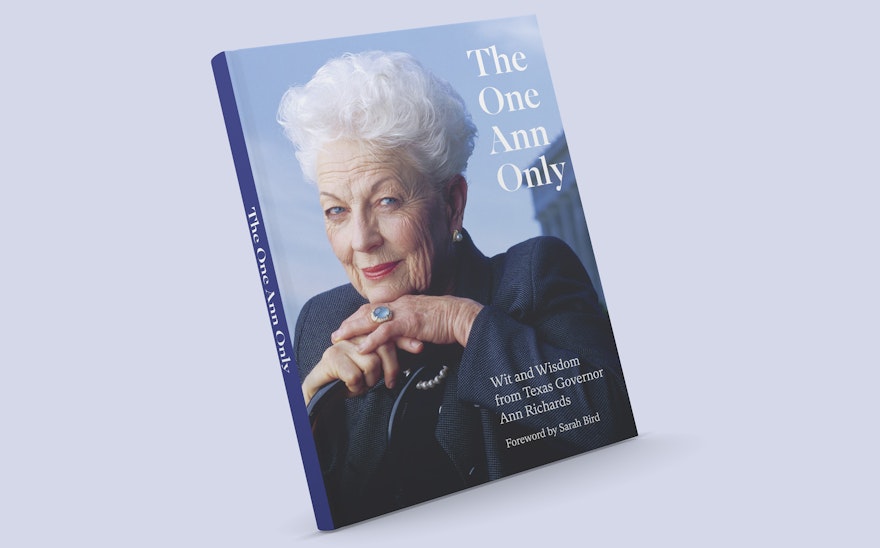
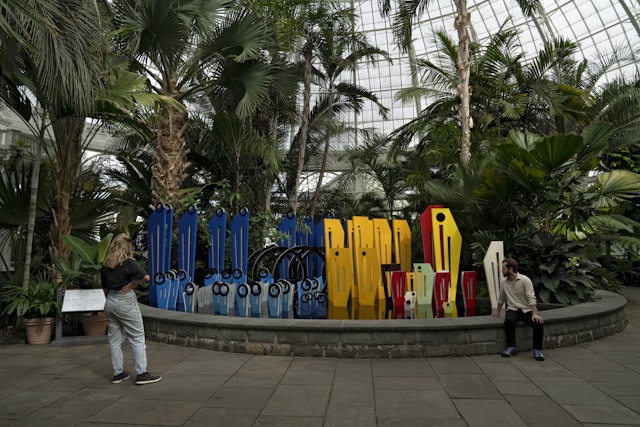
Using the basin as a metaphor for the world, the sculpture fills the pool with 100 metal totems that represent data on the foods we consume and their carbon imprint.
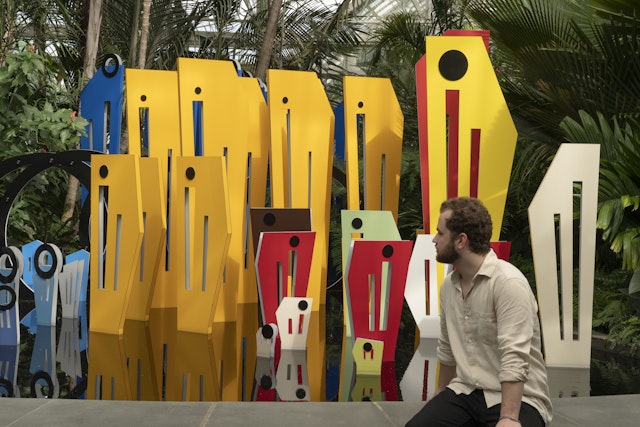
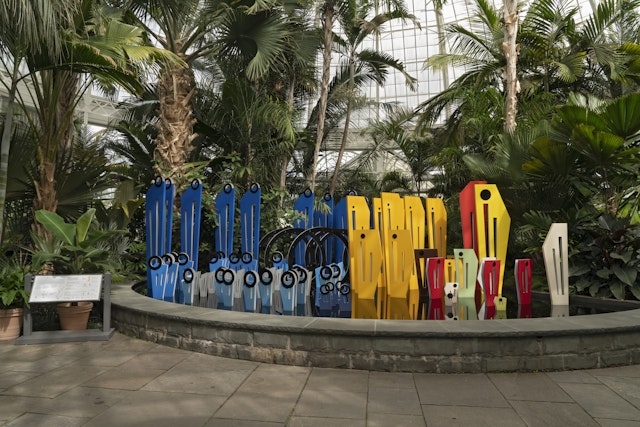
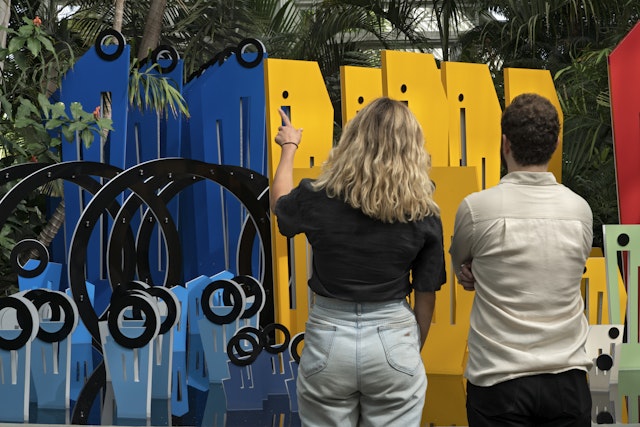
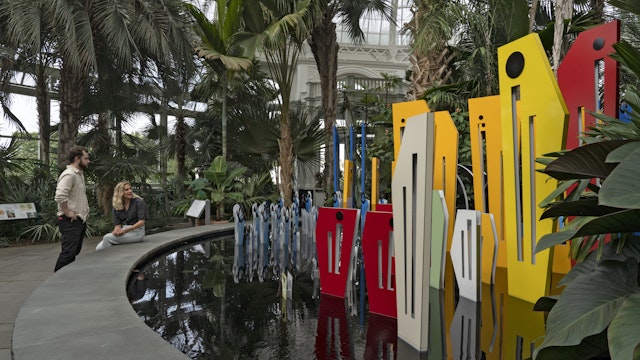
Different types of food are indicated by color, and the height of the totem describes how much the average person consumes per year.
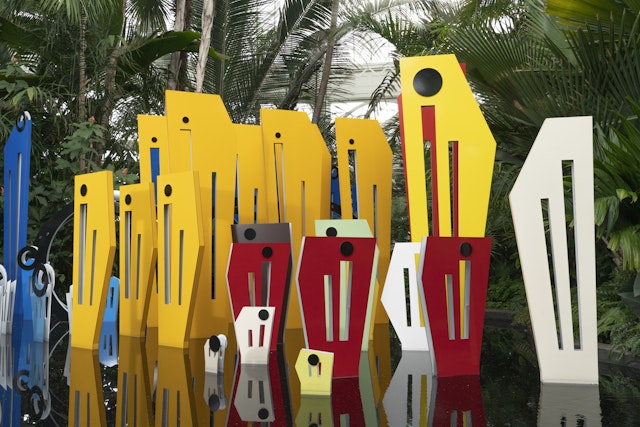

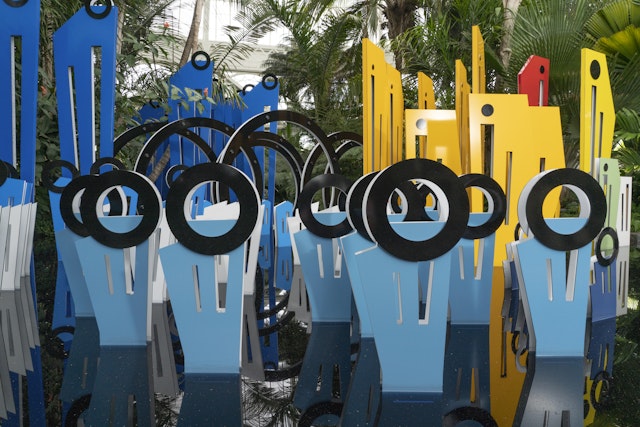



A detailed legend helps visitors decode the piece and engage with the layered data behind it.
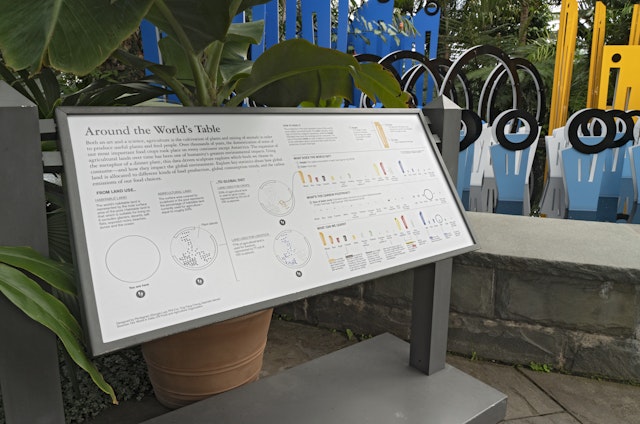
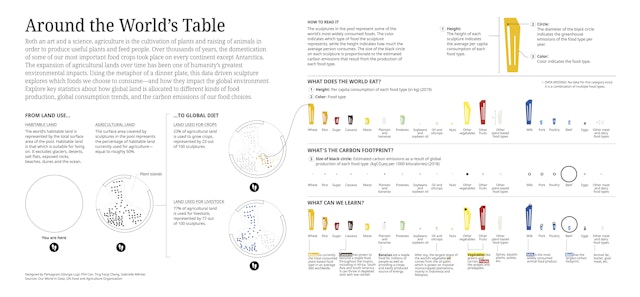
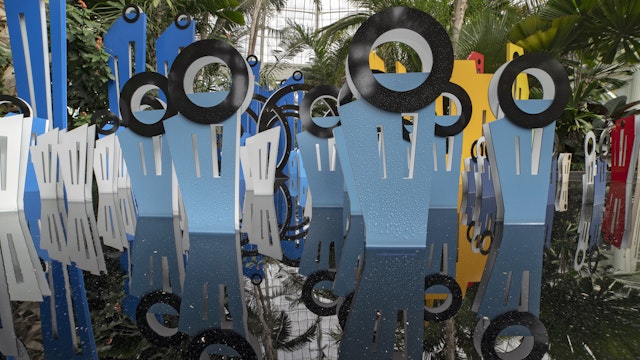

The shapes of the metal sculptures are abstract and non-representational, while still evoking the growth of plant forms.
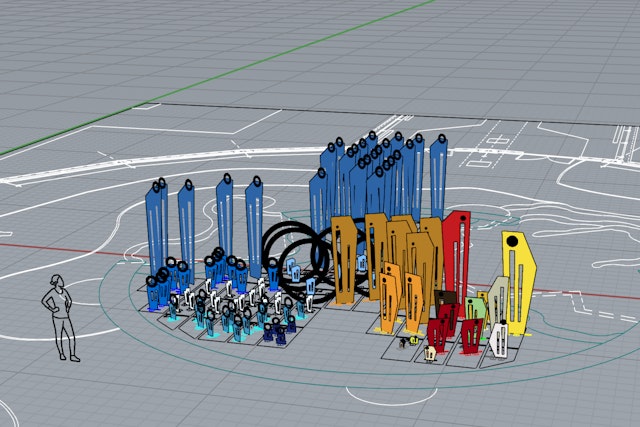


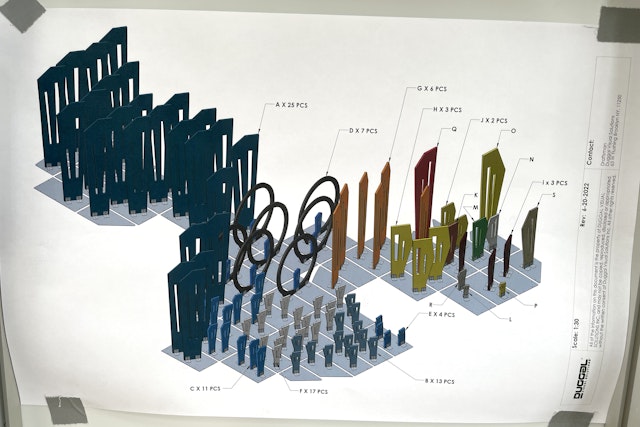
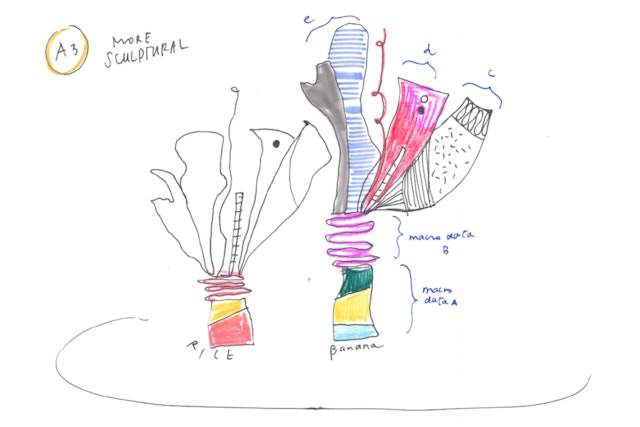


Agriculture is the world’s largest industry, occupying around 50 percent of the Earth’s habitable land and employing more than one billion people. The expansion of agricultural lands over thousands of years to cultivate plants and raise animals in order to feed people has been one of humanity’s greatest environmental impacts on the planet.
The global impact of food production and consumption is explored in Around the World’s Table, an immersive data sculpture created by Pentagram partner Giorgia Lupi and team as part of Around the Table: Stories of the Foods We Love, a major summer exhibition at the New York Botanical Garden in the Bronx. Integrated throughout NYBG’s lush 250-acre landscape, the show celebrates the art and science of foodways and food traditions and the foundational role of plants in all culinary customs.
The data installation is displayed in the reflecting pool of the Palms of the World Gallery at the center of NYBG’s landmark Enid A. Haupt Conservatory. Using the basin as a metaphor for the world (as well as a dinner plate), the sculpture fills the pool with 100 partially submerged metal totems that represent the major food groups we consume, their share in the global diet, and their relative carbon imprint. The placement of the pieces reflects the percentage of the world’s habitable land used for agriculture, roughly half the fountain.
Around the World’s Table is the first data driven sculpture conceived by Giorgia, who is known for her human-centered approach to data visualization and storytelling. At a time when the UN has warned of a global food shortage, the project looks at how global land is allocated to different kinds of food production, and how our diets actually affect the world around us.
“Our starting point for this project was to illuminate what we eat and where it comes from, with the aim of cultivating a deeper understanding of the potential and maybe even surprising impacts of food choices,” said Giorgia. “Ultimately, we want to spark questions. Where does our food come from? And how do our choices affect the planet––now, and in the future?”
The sculptural totems represent some of the world’s most widely consumed foods, with color, height, placement and features that denote 2019 data on global food production and consumption gathered from the UN Food & Agriculture Organization and Our World in Data, an open source knowledge-sharing platform for scholars and researchers. The parameters offer multiple visual narratives for visitors to examine on their own terms.
The shapes of the metal sculptures are abstract and non-representational, while still evoking the growth of plant forms. Rather than depicting specific food types, the design keeps the focus on the idea of the resources required to produce each category.
A detailed legend helps visitors decode the piece and engage with the layered data behind it. Different types of food are indicated by color, and the height of the totem describes how much the average person consumes per year. The diameter of the black circle on each piece is proportionate to the estimated carbon emissions that result from the production of the food type per year.
For example, 77 percent of agricultural land is used for livestock, so 77 out of the 100 sculptures appear in various shades of the color blue––for milk, poultry, beef, pork, and other meat and dairy products. The thick black circles on these totems indicate the large carbon footprint of animal agriculture. In comparison, grains like wheat and rice are also consumed in major quantities, but with less greenhouse gas emissions.
“Around the World’s Table offers visitors to NYBG a unique opportunity to visually understand how the food choices they make can have far reaching environmental impact,” says Jennifer Bernstein, CEO and The William C. Steere Sr. President of The New York Botanical Garden. “We can all contribute to a healthier and more sustainable future through the everyday choices that we make about the food on our tables.”
The installation will be on view as part of Around the Table through September 11, 2022.
Client
New York Botanical GardenSector
- Arts & Culture
Discipline
- Exhibitions
- Data Driven Experiences
Office
- New York
Partner
Project team
- Ting Fang Cheng
- Phillip Cox
- Gabrielle Merite
- Madeleine Garner
